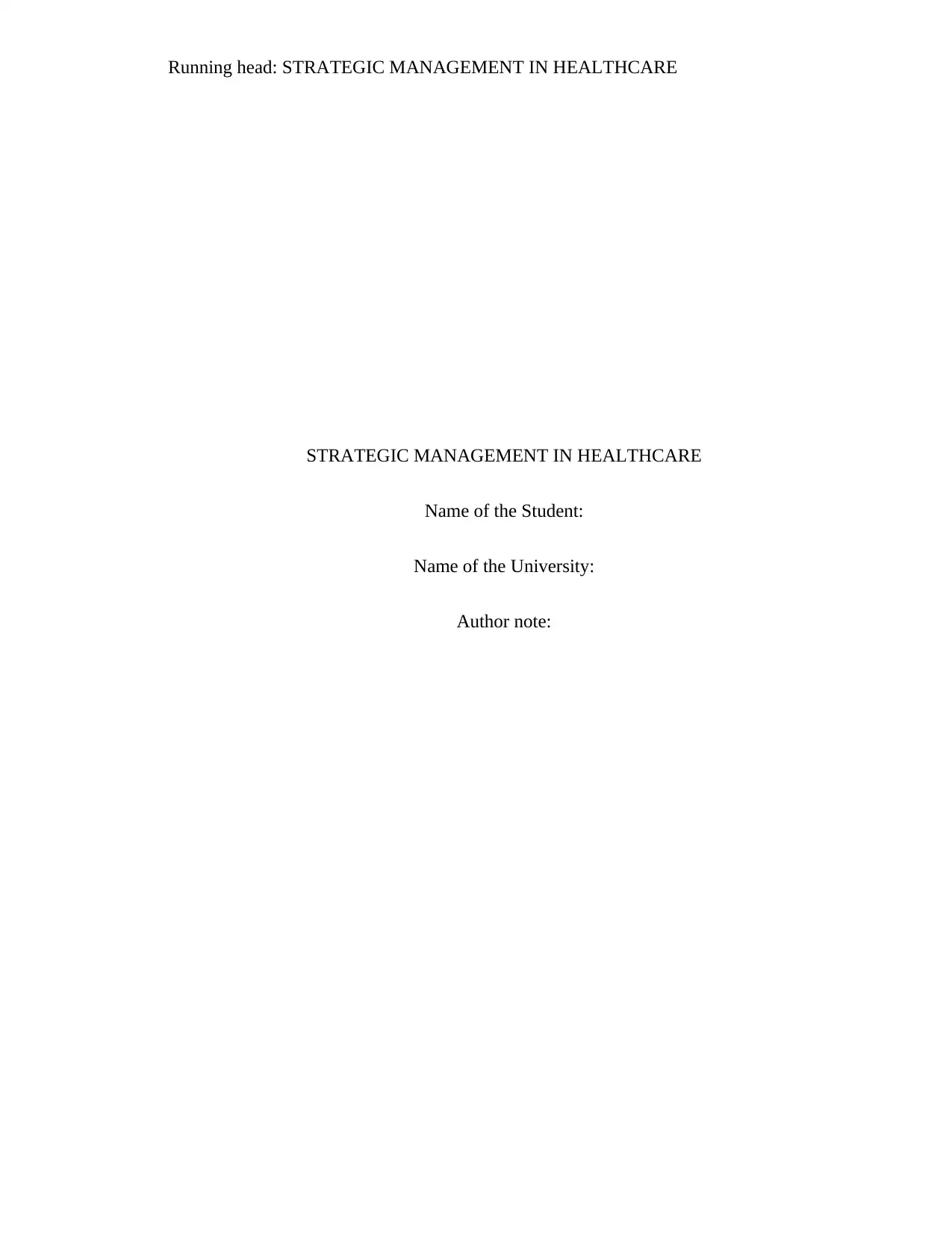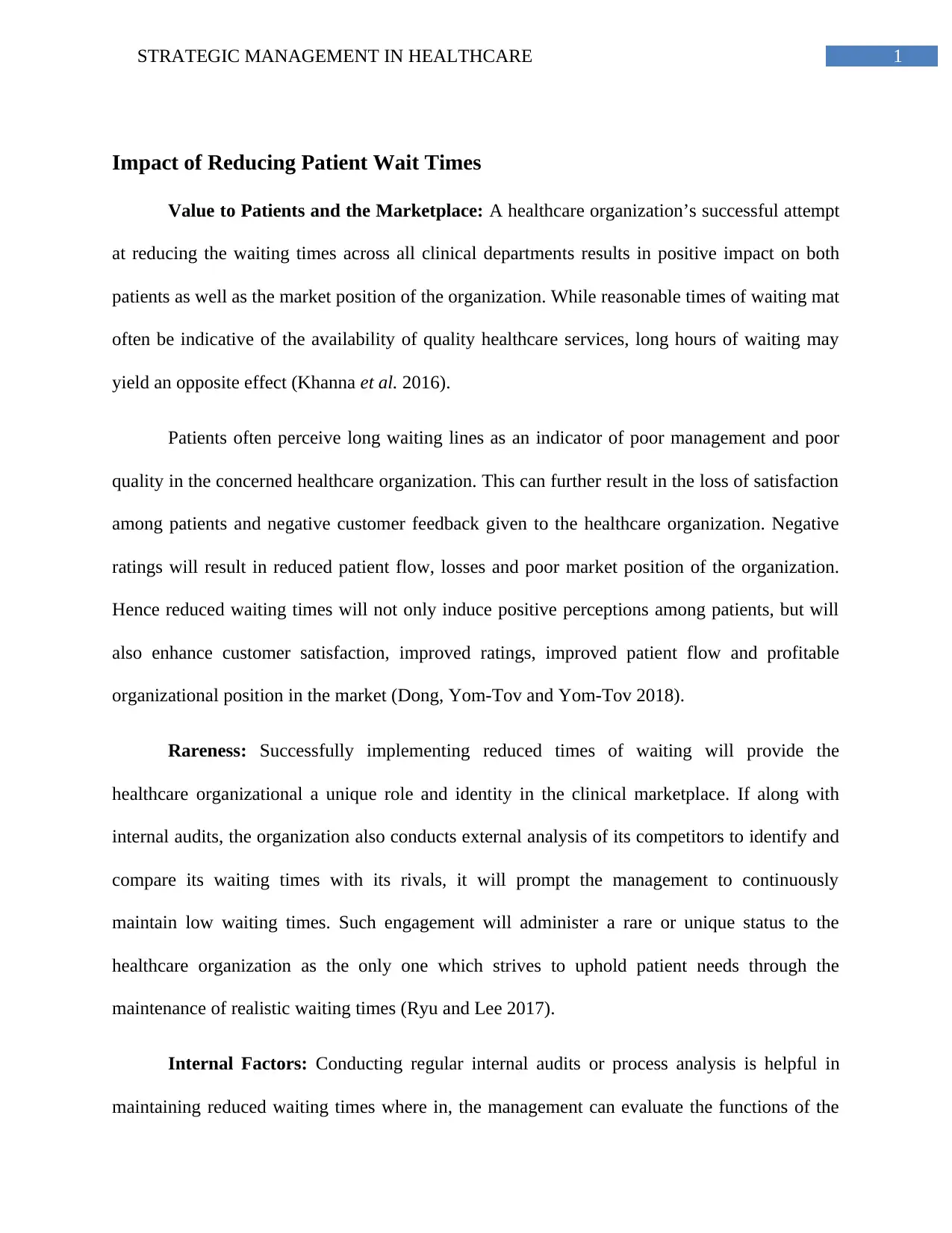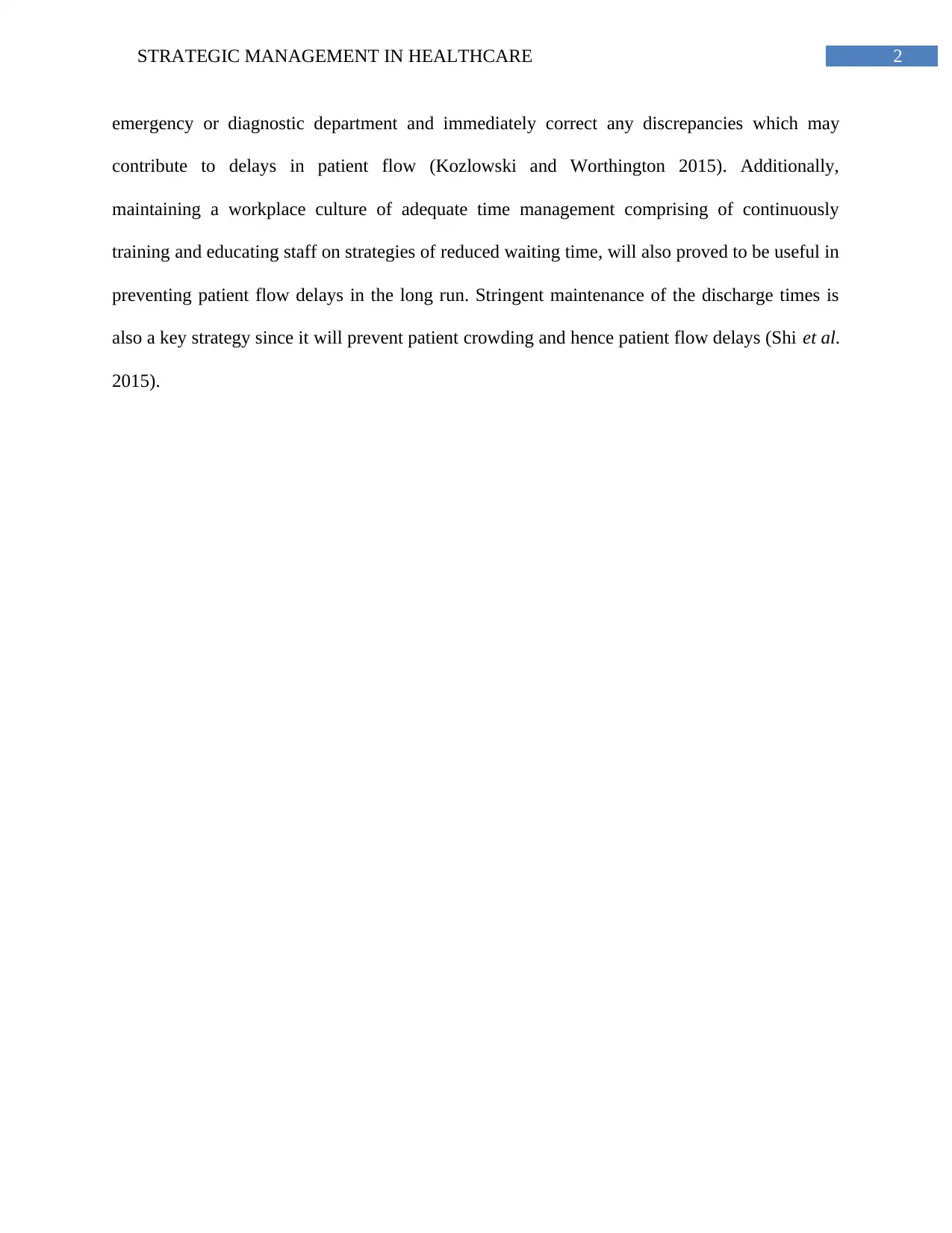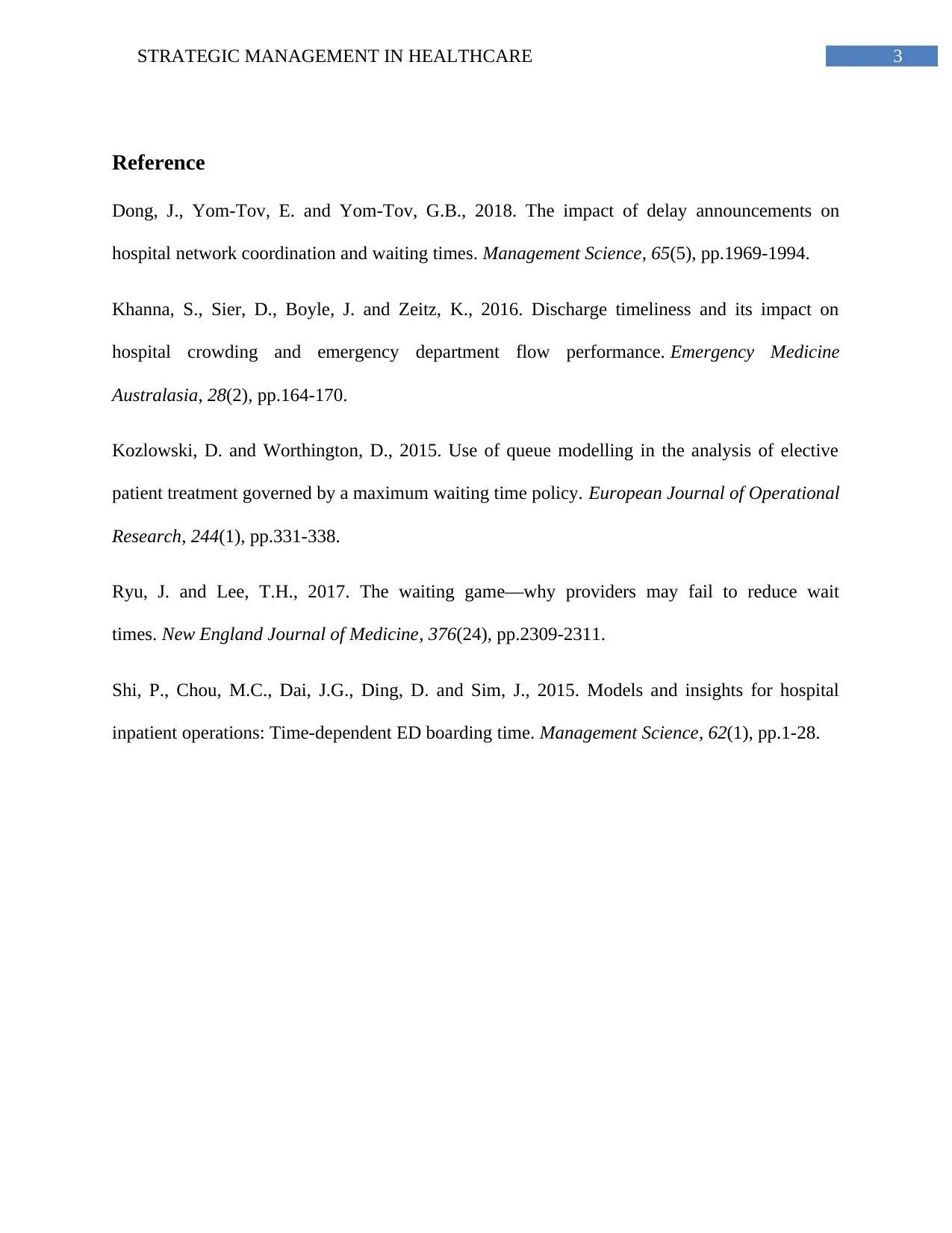Strategic Management in Healthcare: Reducing Patient Wait Times
VerifiedAdded on 2022/11/25
|4
|633
|215
Report
AI Summary
This report delves into the critical aspect of strategic management within the healthcare sector, specifically focusing on the impact of patient wait times. It underscores the significance of reducing wait times to enhance patient satisfaction, improve the organization's market position, and ensure efficient operational management. The report highlights the detrimental effects of prolonged wait times, which can lead to negative patient experiences, reduced satisfaction, and diminished organizational reputation. It emphasizes the importance of internal audits and process analysis to identify bottlenecks and implement effective strategies to reduce waiting times, such as optimizing emergency and diagnostic departments, providing staff training, and streamlining discharge procedures. The report also stresses the importance of maintaining a competitive edge by monitoring and improving wait times compared to competitors. By implementing these strategies, healthcare organizations can improve patient flow, enhance their market presence, and cultivate a culture of efficiency and patient-centered care.
1 out of 4







![[object Object]](/_next/static/media/star-bottom.7253800d.svg)